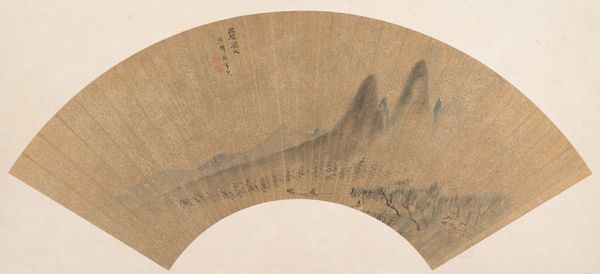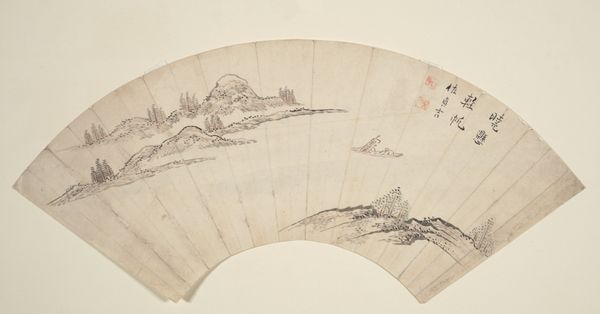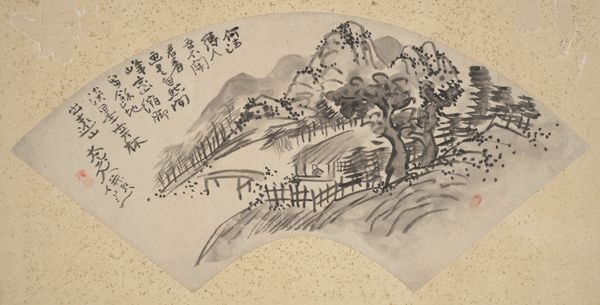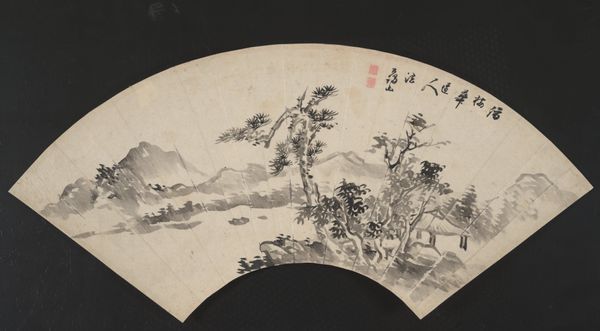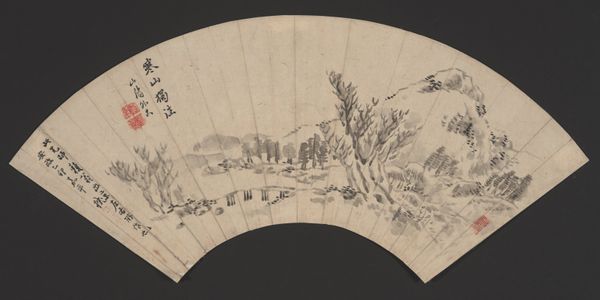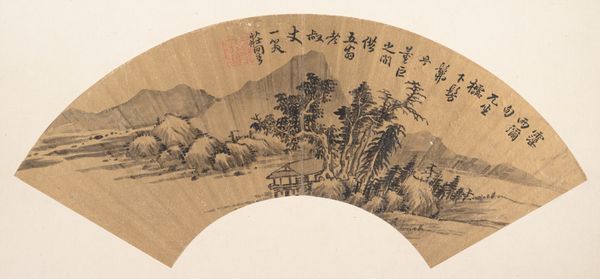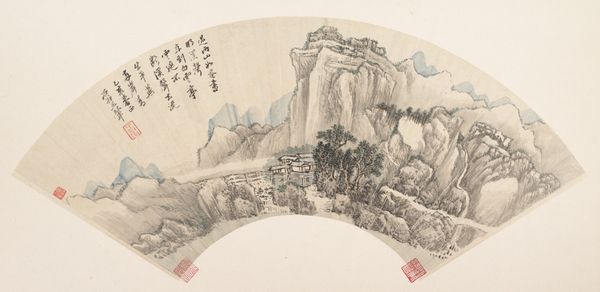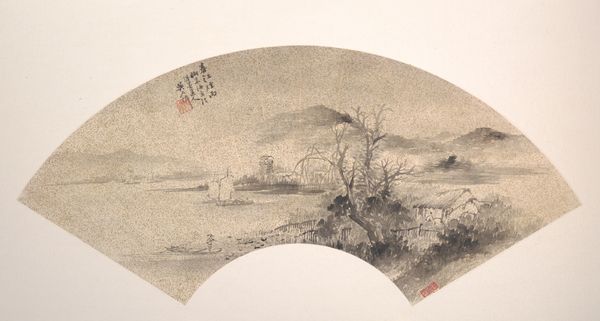
Dimensions: 9 3/16 × 20 3/16 in. (23.34 × 51.28 cm)
Copyright: Public Domain
Nagamachi Chikuseki created this landscape painting on paper in the late 18th century. The fan-like shape of the painting gives us an insight into the function of this artwork. During the Edo period in Japan, landscape paintings weren’t simply artistic expressions but were deeply rooted in social and cultural contexts. This image presents mountains, trees, and water. These natural elements weren't just aesthetic choices; they reflected the values of harmony and balance central to Japanese society. Paintings like this were often commissioned by members of the upper classes, functioning as status symbols, indicating their refined taste and appreciation for nature. The landscape conveyed philosophical ideas, particularly those of Zen Buddhism, which gained prominence among the samurai class. By researching historical texts, social records, and artistic conventions of the time, we can better understand the complex interplay between art, society, and power.
Comments
No comments
Be the first to comment and join the conversation on the ultimate creative platform.
